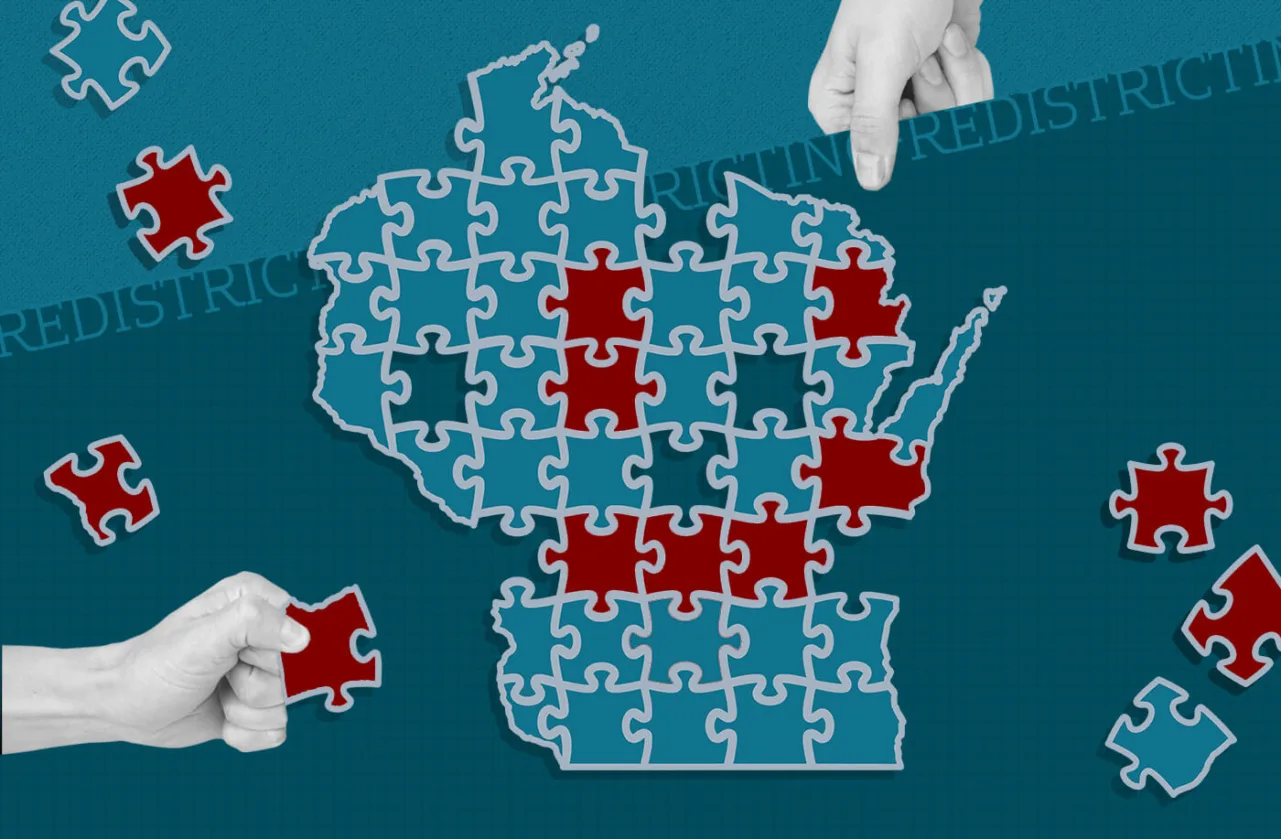
#image_title
By choosing Evers’ modified option, court rules 4-3 against GOP efforts to tilt the maps even further from statewide voter makeup.
The state of Wisconsin will continue to have gerrymandered maps for another decade, but a decision handed down Thursday by the state Supreme Court in favor of Gov. Tony Evers means the boundaries for legislative and congressional districts won’t be as skewed as initially written by the Republicans who control the Legislature.
Conservative Justice Brian Hagedorn, who has repeatedly put himself in the swing-justice position, joined the court’s progressives and wrote the 4-3 decision that adopts maps submitted by Evers rather than the proposals from five other parties involved in the case.
Evers’ maps give Republicans an advantage in 55 of 99 Assembly seats, 20 of 33 state Senate districts, and five of eight congressional districts. Fair maps drawn by Evers’ nonpartisan People’s Maps Commission—which he was forced to abandon after the conservative justices decided on a “least-changes” framework—would have given Republicans a 55 to 58-seat advantage in the Assembly, while Republicans drew maps that had the potential to deliver themselves supermajorities in both chambers that could override Evers’ vetoes.

In November, Hagedorn joined the three other conservatives in ruling that the future maps must make as few changes as possible to the current maps—drawn in 2011 and heavily tilted toward Republicans—accounting only for population shifts and abiding by federal civil rights laws.


Hagedorn defended the standard in Thursday’s decision.
“By focusing on legal requirements and using the maps currently reflected in Wisconsin law as a reference point, we sought to minimize our involvement in the numerous policy and political decisions inherent in mapdrawing,” he wrote.
Sachin Chheda, Fair Elections Project director and an advocate of fair maps in Wisconsin, expressed disappointment in the court’s decision, saying the “least changes” framework limited the number of options justices could consider.
The new election districts, gerrymandered significantly in Republicans’ favor after the last census in 2011, will continue to “pose a serious threat to representative democracy in our state,” he said.
“The die was cast when a partisan majority of the court ignored the Constitution, ignored the law, and sided with the interests of a few powerful Republican politicians over a supermajority of Wisconsinites who want fair maps,” Chheda said in a statement.
As for the congressional maps that redraw the eight US House districts, Hagedorn gave credit to Evers’ submittal. “The Governor’s map moves the fewest number of people into new districts. It is not a close call. The Governor’s map comes close to perfect equality.”
Progressive Justice Ann Walsh Bradley wrote in a concurring opinion that the court should not have adopted the “least changes” option and also should not have agreed to take the case as an original action “filed before the Legislature and governor had even acted on any redistricting legislation,” she wrote, and believed the matter should have stayed in federal courts as it has been since the early 1960s, “because this court had no experience in drawing district maps.”
Conservative Chief Justice Annette Ziegler wrote in her dissent that the maps submitted by Republican legislators and members of Congress should have been chosen. She claimed the majority’s decision “is an exercise of judicial activism, untethered to evidence, precedent, the Wisconsin Constitution, and basic principles of equal protection.”
Wisconsin’s current maps are regularly referenced as the most gerrymandered in the country. In a state where presidential election results are razor thin and Democrats have won in every statewide election since 2018, the Republican-drawn maps of 2011 limited Democrats to winning just 38% of Assembly and state Senate races in 2020.
Support Our Cause
Thank you for taking the time to read our work. Before you go, we hope you'll consider supporting our values-driven journalism, which has always strived to make clear what's really at stake for Wisconsinites and our future.
Since day one, our goal here at UpNorthNews has always been to empower people across the state with fact-based news and information. We believe that when people are armed with knowledge about what's happening in their local, state, and federal governments—including who is working on their behalf and who is actively trying to block efforts aimed at improving the daily lives of Wisconsin families—they will be inspired to become civically engaged.


Opinion: Many to thank in fair maps victory for Wisconsinites
On February 19, 2024, Governor Tony Evers signed into law new and fair state legislative maps, bringing hope for an end to over a decade of...

Opinion: Empowering educators: A call for negotiation rights in Wisconsin
This week marks “Public Schools Week,” highlighting the dedication of teachers, paras, custodians, secretaries and others who collaborate with...

Op-ed: Trump’s journey from hosting The Apprentice to being the biggest loser
Leading up to the 2016 election, Donald Trump crafted an image of himself as a successful businessman and a winner. But in reality, Trump has a long...

Not just abortion: IVF ruling next phase in the right’s war on reproductive freedom
Nearly two years after the US Supreme Court overturned Roe v. Wade, another court is using that ruling to go after one of the anti-abortion right’s...





